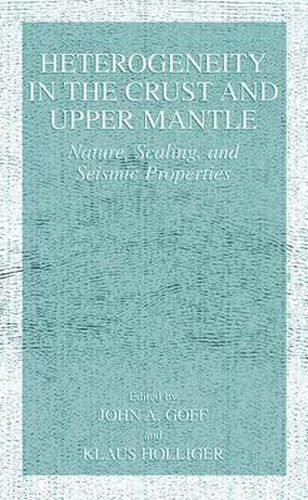Readings Newsletter
Become a Readings Member to make your shopping experience even easier.
Sign in or sign up for free!
You’re not far away from qualifying for FREE standard shipping within Australia
You’ve qualified for FREE standard shipping within Australia
The cart is loading…






This title is printed to order. This book may have been self-published. If so, we cannot guarantee the quality of the content. In the main most books will have gone through the editing process however some may not. We therefore suggest that you be aware of this before ordering this book. If in doubt check either the author or publisher’s details as we are unable to accept any returns unless they are faulty. Please contact us if you have any questions.
Most of our knowledge about the physical structure and the chemical composition of the Earth’s deep interior is inferred from seismic data. The interpretation of seismic waves generally follows the assumption that the Earth’s physical structure is grossly layered and that fluctuations of the physical parameters within individual layers are smooth in structure and small in magnitude. While this view greatly facilitates the analytic and interpretative procedure, it is clearly at odds with evidence from outcrops and boreholes, which indicates that compositional, structural and petrophysical heterogeneity in the Earth prevails over a wide range of scales. This book aims to unify three different views of crustal and upper mantle heterogeneity. It brings together the geological view, which is derived from the analysis of crustal exposures and deep boreholes; the stochastic view, which attempts to find order and structure in these seemingly chaotic data; and the seismological view, which considers the end product of the complex interaction of seismic energy with the heterogeneous structure at depth. John Goff and Klaus Holliger have compiled chapters that explore and quantify the relationship between geological and petrophysical heterogeneity and its seismic response, and use seismic data to probe the fabric of the Earth’s interior. Geologists, geostaticians, and geophysicists alike should benefit from the integrative perspective presented in the text.
$9.00 standard shipping within Australia
FREE standard shipping within Australia for orders over $100.00
Express & International shipping calculated at checkout
This title is printed to order. This book may have been self-published. If so, we cannot guarantee the quality of the content. In the main most books will have gone through the editing process however some may not. We therefore suggest that you be aware of this before ordering this book. If in doubt check either the author or publisher’s details as we are unable to accept any returns unless they are faulty. Please contact us if you have any questions.
Most of our knowledge about the physical structure and the chemical composition of the Earth’s deep interior is inferred from seismic data. The interpretation of seismic waves generally follows the assumption that the Earth’s physical structure is grossly layered and that fluctuations of the physical parameters within individual layers are smooth in structure and small in magnitude. While this view greatly facilitates the analytic and interpretative procedure, it is clearly at odds with evidence from outcrops and boreholes, which indicates that compositional, structural and petrophysical heterogeneity in the Earth prevails over a wide range of scales. This book aims to unify three different views of crustal and upper mantle heterogeneity. It brings together the geological view, which is derived from the analysis of crustal exposures and deep boreholes; the stochastic view, which attempts to find order and structure in these seemingly chaotic data; and the seismological view, which considers the end product of the complex interaction of seismic energy with the heterogeneous structure at depth. John Goff and Klaus Holliger have compiled chapters that explore and quantify the relationship between geological and petrophysical heterogeneity and its seismic response, and use seismic data to probe the fabric of the Earth’s interior. Geologists, geostaticians, and geophysicists alike should benefit from the integrative perspective presented in the text.